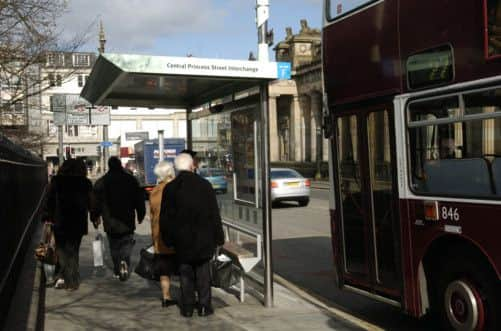Why not extend free bus pass scheme?


The Scottish Government predicts an increase of 38 per cent in the over-85 age group between 2006 and 2031. In many areas, it is making reasonable preparations for the additional demand on services this will bring, such as investment in reshaping care for older people.
This ability to predict and plan accordingly is something community transport providers across Scotland would love to share. However, around 70 per cent of those giving evidence to the Scottish Parliament’s Infrastructure and Capital Investment Committee earlier this year confessed that, because of unstable and short-term funding, they could not plan their business much more than a year into the future. This is despite the sector’s services being recognised by the committee as vital and its conclusion that “Scotland’s ageing population will inevitably lead to an increasing requirement for, and reliance on, community transport services.” On this issue, the Scottish Government’s foresight also seems to be faltering.
Advertisement
Hide AdAdvertisement
Hide AdIn 2008, ring-fenced funding for the sector came to an end. Support for community transport is now at the discretion of local authorities, yet some don’t fund it, and others generally do so only on a year-by-year basis. Transport Minister Keith Brown has no plans to change this, suggesting it is up to stakeholders to make the challenge if they feel community transport is underfunded locally.


A more sustainable solution
However, the committee noted that as a consequence of ending ring-fenced funding, the growth rate of community transport operators in Scotland has slowed considerably. Various bid-in public funding streams are available to some community transport providers, including the Bus Service Operators Grant and Bus Investment Fund, but collectively these are proving insufficient as operating costs and demand for services rise.
Age Scotland proposes a more sustainable solution; including community transport in the National Concessionary Travel (NCT) scheme, on a 100 per cent reimbursement basis. Currently, older people can use bus passes on some community bus routes, but door-to-door services responding to individual needs are excluded from NCT. Funding constraints mean some community transport services have to charge, so people who are unable to use regular bus services due to disability, ill-health or geography end up out of pocket while their peers travel free.
The committee shared our concerns about this inequity, but felt installing and maintaining bus pass-reading technology in community transport vehicles, some of which are private cars, would be logistically too difficult. Keith Brown was concerned our estimate of £11.2 million a year would prove conservative given uncertainties regarding the level of community transport provision.
Where does this leave us? In response to the committee report on community transport, the Scottish Government said it will consider a grant scheme to fund new vehicles. This would be welcome, but wouldn’t help with on-going running costs, or enable service expansion in response to rising levels of need, or allow community transport services to be set in up areas where they are currently unavailable.
Surely Scottish Government can think more creatively. Yes, it’s a stretch to imagine volunteer drivers having bus pass-reading technology welded into their cars. However, Transport Scotland is looking at hand-held technology; perhaps this could be an option? And would a technological solution be necessary?
Looking at different kinds of community transport
Community transport services will know how many journeys each registered user makes, and could easily find out who has a bus pass. This could dispense with the need for expensive equipment and still provide the data required by Government. Since the NCT scheme’s inception, concerns have occasionally been raised about excessive claims from bus operators, and the scheme must be tightly managed. However, community transport providers aren’t in it for profit, so a more light-touch system could be tolerated.
The Scottish Government promised research to improve our understanding of the social impact of community transport. This could be extended to trial extension of NCT to community transport, looking at different kinds of community transport and a mix of rural and urban settings.
Advertisement
Hide AdAdvertisement
Hide AdAge Scotland is not hung up on extension of the NCT scheme to community transport. If there is a better way in which to achieve our desired outcome – that older people don’t suffer isolation due to their lack of access to suitable transport – we would be more than happy to sign up to it. But neither the committee, nor the Scottish Government, have identified such a solution.
Failure to find an answer won’t just mean continuation of the community transport sector’s financial woes. Efforts to re-shape care will be hobbled, with vulnerable older people less able to access support services such as day care. And health and social care budgets will come under unnecessary additional pressure as isolation and loneliness take their toll on well-being.
• Doug Anthoney is communication and campaigns officer at Age Scotland